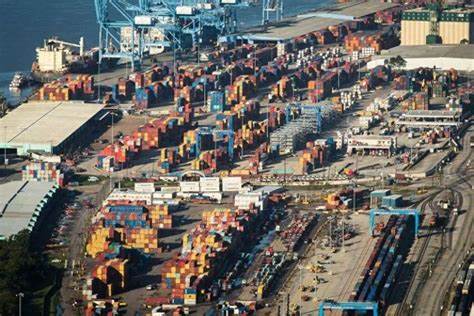In the international trade arena of 2025, tea is experiencing an unprecedented storm. The United States imposed a 25% retaliatory tariff on Canada, and Chinese tea exports suffered a 34% "reciprocal tariff" plus an additional 50% countermeasure, completely rewriting the global tea trade pattern. This trade dispute caused by steel and aluminum products eventually affected the fate of this oriental leaf. This article will deeply analyze the multi-dimensional impact of the trade war on the tea industry and exclusively reveal the way out for Chinese tea companies.

The US tariff rate on Chinese tea has soared from 3% in 2024 to 34% in 2025. Together with the additional 50% countermeasure announced by the Trump administration on April 8, the combined tariff rate is as high as 104%. This has directly led to a 30% drop in the export volume of Fujian Wuyi Rock Tea to the US, and Zhejiang Longjing has been forced to turn to the Southeast Asian market. Even more serious is that China's green tea and black tea are both on the list of teas that Canada has imposed a 25% tariff on, and the North American market has been completely lost.
The cost of shipping from China's southeast coast to the west coast of the United States has increased by 20%, while India and Sri Lanka have quickly seized the high-end black tea market by taking advantage of the tariff advantages of English-speaking countries (for example, the UK's tariff on Indian tea is only 2%). Kenya, through the EU's duty-free treatment (Economic Partnership Agreement), will increase its exports to the EU by 12% in 2024, and China's green tea market share in the EU has been squeezed to a record low.
(3). Price transmission chain: cost transfer from tea garden to tea cup
According to data from the American Tea Association, for every 10% increase in tariffs, the retail price will rise by 15%. The average price of tea exported from China to the United States will drop from $4.66/kg in 2024 to $3.5/kg in 2025, while the average price of Sri Lankan black tea will rise against the trend to $13.17/kg. Consumers are forced to choose between high-priced imported tea and low-priced alternatives, and the risk of losing young customers is increasing.
- Re-export trade: Chinese tea companies process and re-export through Malaysia, using ASEAN rules of origin to circumvent European and American tariffs. For example, after being repacked in Malaysia, Yunnan Pu'er tea can enjoy zero tariffs under the RCEP framework to enter the EU.
- Localized production: Leading companies such as China Tea Group set up repackaging plants in Morocco and Thailand, using the "substantial transformation" rules to obtain local certificates of origin.
- Green certification: Yunnan tea gardens can exchange for EU CBAM tariff deductions through carbon sink trading (1 hectare of tea gardens fixes 2.5 tons of carbon per year), reducing export costs.
- Blockchain traceability: The Wuyi Rock Tea blockchain system increases the premium of high-end tea by 22%. Consumers can scan the code to view the tea tree growth environment, tea maker information and logistics track.
- Intelligent processing: Fujian tea companies introduced AI sorting machines to reduce the fluctuation rate of tea quality from 40% to 15%, while reducing labor costs by 30%.
- Deeply processed products: The export value of deep-processed products such as tea polyphenol extracts and tea beverage concentrates increased by 45% year-on-year, and the tax rate below 5% was applied, becoming a new profit growth point.
- Middle East market: Saudi Arabia's tea consumption increased by 7% annually, and Chinese black tea and white tea quickly penetrated through the concept of "healthy tea drinks". Exports to Saudi Arabia are expected to exceed 10,000 tons in 2025.
- Central Asian market: Kazakhstan's tea import tariff is only 5%. China shortens the logistics cycle through the China-Laos Railway. In 2025, exports to Kazakhstan increased by 25% year-on-year.
- African market: Suizhou Zhongxing Food has established more than 20 agents in Mauritania and Mali through the "Dahongshan" brand, with an annual export volume of more than 3 million US dollars.
- IPization of intangible cultural heritage: Geographical indication products such as Anxi Tieguanyin and West Lake Longjing have passed the EU mutual recognition agreement, and the premium rate can reach 20-30%. The premium rate of the Palace Museum co-branded teaware and Dunhuang theme tea gift boxes is as high as 300%.
- Tea diplomacy: The China Tea Museum has opened branches in Paris and New York, reshaping international cognition through tea art performances and theme exhibitions. The Japanese matcha and British afternoon tea culture circles are being reversely infiltrated by Chinese tea culture.
- Functional products: The repurchase rate of functional label products such as "fat-reducing black tea" and "calming white tea" has increased to 40%, and the annual growth rate of innovative products such as tea polyphenol medical dressings and theanine functional drinks has exceeded 45%.
- Tea tourism integration: The "tea field homestay + handmade tea experience" model in Moganshan, Zhejiang, has increased the average customer price by 30%; the ancient tea forest in Jingmai Mountain, Yunnan has been selected as a national key cultural tourism project, driving surrounding consumption of more than 1 billion yuan.
- Free Trade Agreement Dividends: Under the RCEP framework, China-ASEAN tea tariffs will be reduced to 0 within 5 years, and exports to ASEAN are expected to exceed 150,000 tons in 2025.
- Capital Injection: Social capital is accelerating the layout of tea technology, and tea polyphenol extraction technology and tea-based skin care product research and development have received hundreds of millions of yuan in investment, pushing the industrial chain to extend to high added value.
- Exchange rate fluctuations: If the RMB appreciates by 5% against the US dollar and a 25% tariff is imposed, export profits will return to zero.
- Competition from substitutes: The global coffee consumption growth rate (3.2%) continues to be higher than that of tea (1.8%), and the tea drinking preference of Generation Z has shifted to coffee and fruit tea.
- Technical barriers: The EU intends to reduce the residue limit of acetamiprid from 0.05mg/kg to 0.01mg/kg, and 30% of Chinese tea companies face a doubling of testing costs.
- Standard output: The ISO 20715 international standard "Tea Classification" led by China officially came into effect, promoting the "Chinese standard" to become a global industry benchmark.
- Brand breakthrough: Leading tea companies such as Bama Tea and Xiaoguan Tea have opened 50 "tea culture experience stores" in Africa and the Middle East, and localized marketing strategies have increased the repurchase rate to 35%.
- Supply chain resilience: Yunnan, Myanmar and Laos jointly built a "cross-border tea industry belt" and shortened the logistics cycle from 45 days to 7 days through the China-Laos Railway.
The trade war in 2025 is not only a tariff game, but also a battle for the Chinese tea industry to rebirth from "scale expansion" to "quality and brand dual-wheel drive". While India and Sri Lanka are seizing the market through tariff advantages, Chinese tea companies are reconstructing the global value chain with "cultural IP + technology empowerment + green supply chain". This revival movement of oriental leaves will eventually allow "Chinese tea" to break out of the smoke of the trade war and become a value benchmark in the wave of global consumption upgrades.
- 2025 年美加 “贸易战” 百科。抖音百科.
- 我国出口茶叶在意大利遭扣留。安徽省商务厅.
- 美国对等关税落地,将对我国茶叶贸易产生哪些影响?茗边.
- 2025 年关税战背景下茶叶解读。周先生新农人推广者.
- 关税战背景下茶产业的全球博弈与战略突围。安根农技.
- 看见 2025 丨王庆:茶文化、茶产业、茶科技三者相互促进协同发展。新华网.
- 2025 茶行业 12 个趋势 50 个关键数据。精制川茶.
- “对等关税” 生效!时代变局之下,中国茶如何找寻新出路。中华网.
- How Trade Wars Are Impacting the Tea Industry. Sally Tea Cups.
- 中国茶叶流通协会关于中国茶产业十四五发展规划建议。安化县人民政府.
- 2025 年 1-2 月中国茶叶进出口简况。进出口食品安全信息平台.
- 农业贸易百问 | 印度茶叶出口贸易知多少?福建省商务厅.
- 斯里兰卡 2024 年茶产业战略。中国农业国际合作促进会.
- 茶叶价格飙升,消费者对高价茶趋之若鹜. 19 楼.
- 三千斤茶叶的市场价格如何确定?和讯网.
- 随州 “香菇大王” 的茶叶生意。农业农村部.
- 环球观茶 | 2025 年俄罗斯茶叶价格或全面上涨 25%. 搜狐网.
- 4 月份雅安茶叶价格呈上涨态势。雅安市人民政府.
- 2025 年 1-2 月茶叶主要进出口国别市场。食品伙伴网.
- 安溪茶叶批发市场 2023 年度茶叶交易情况汇报。泉州市农业农村局.
- RCEP “朋友圈” 让出口企业享利好。海关总署.
- The impact of TPP and RCEP on tea exports from Vietnam. Wiley Online Library.
- 肯尼亚计划实施茶叶出口扩张战略。茶友网.
- List of Top 10 Kenyan Tea Exporters You Need to Know About in 2025. Business Radar.




